| Pecten jacobaeus (Linnaeus, 1758) |
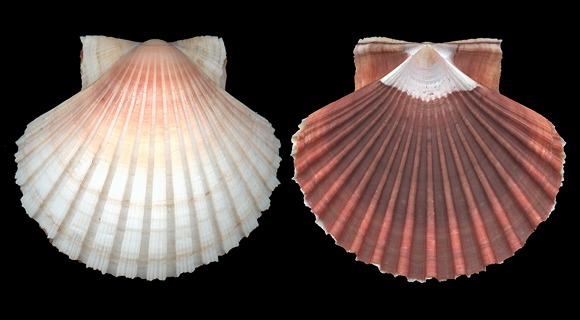 |
Azores & Madeira to Mediterranean & Black Sea. Lies (usually) on its right valve on soft bottoms, from subtidal grounds down to 50-80m deep. Original taxon: Ostrea jacobaea.
25m deep, Gallipoli, Golfo di Taranto, Puglia, S. Italy. 70mm. |
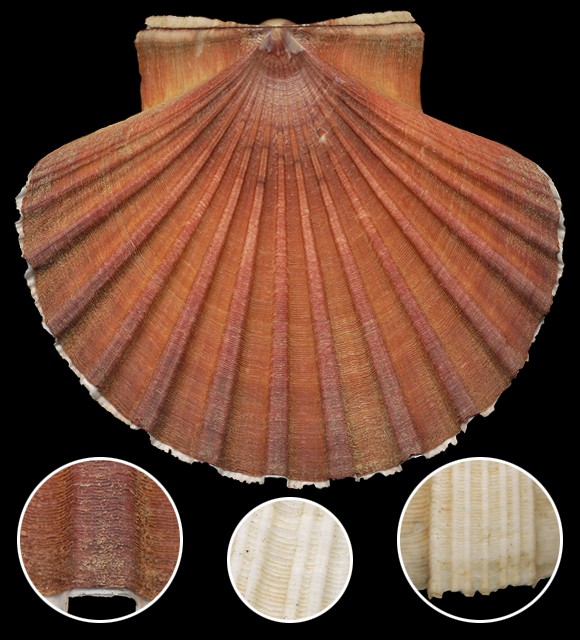 |
| Left valve (flat, coloured) with angular ribs; numerous scales between each rib. Notice also the sculpture on right valve (convex, white). Above: 15-30m deep, off Schiavonea, Corigliano Calabro, Cosenza, Calabria, SW. Italy. 80mm. |
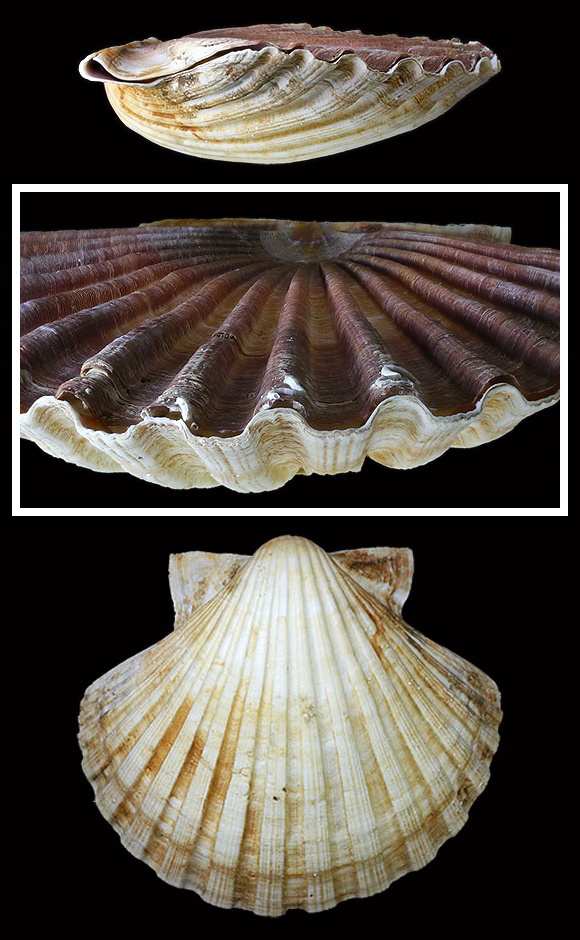 |
The costae of the white right valve are squared and strongly striated radially on their tops; the left valve bears numerous thin commarginal ribs, with some weak radial striae of the top of the rounded costae. – Beachstormed, La Franqui, Leucate, Occitania, S. France. 110mm. Original pictures provided by S. Clanzig (FR) – (CC BY-NC-SA). |
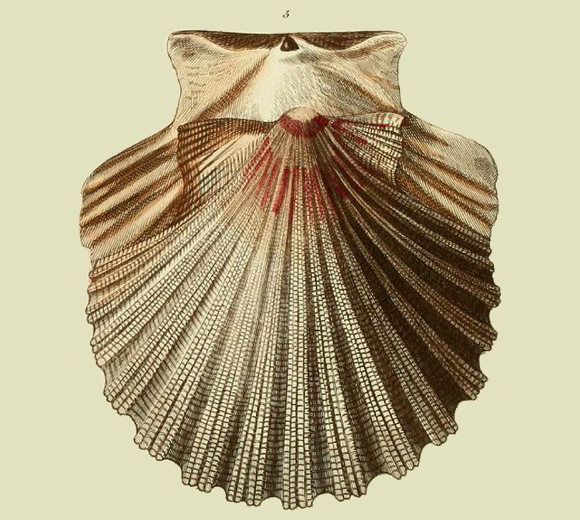 |
| Pecten jacobaeus in T. Brown: Illustrations of the recent conchology of Great Britain and Ireland, London 1844. |
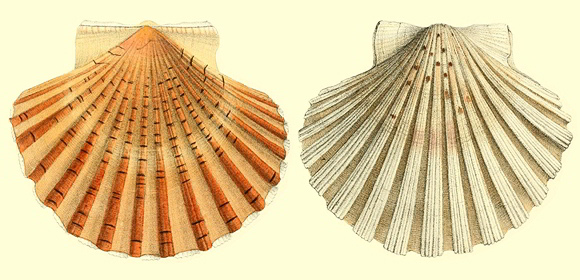 |
| Pecten jacobaeus in J. G. Hidalgo: Moluscos marinos de España, Portugal y las Baleares, Madrid 1870, via BHL. |
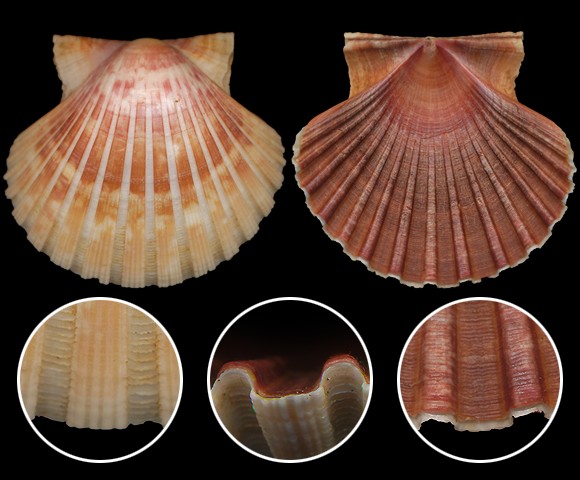 |
| Pretty little specimen dredged at 2-5m deep, on sandy bottom, Deltebre, Tarragona, Catalunya, NE. Spain. 41mm. |
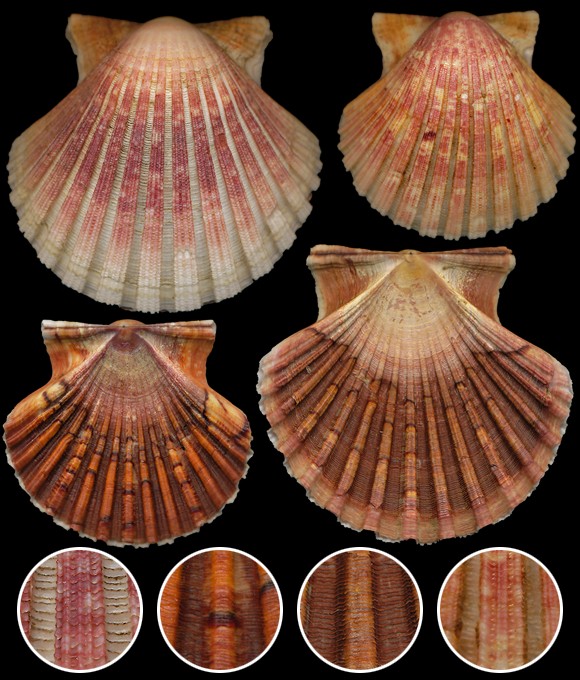 |
| 6m deep, Marina di Pisa, Toscana, W. Italy. 39-50mm. |
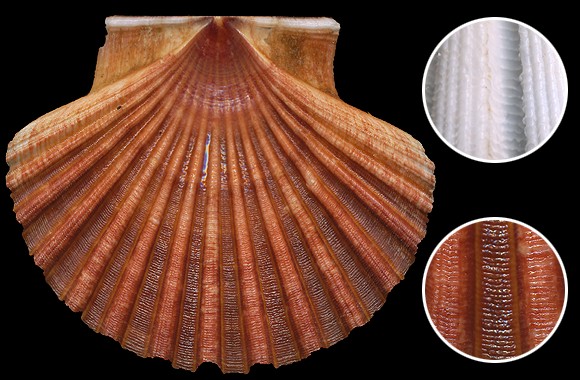 |
| 50-80m deep, off Puerto Mazarrón, Murcia, S. Spain. 76mm. |
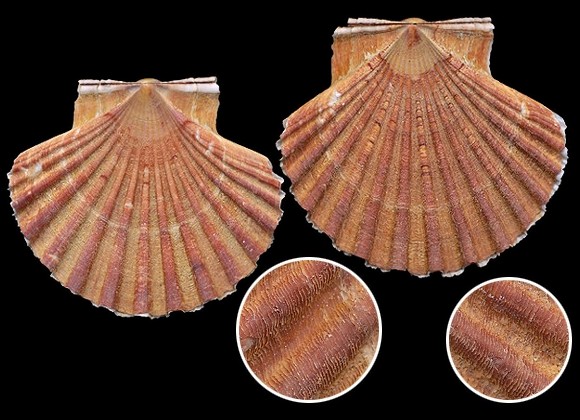 |
| Same spot. 71-74mm. |
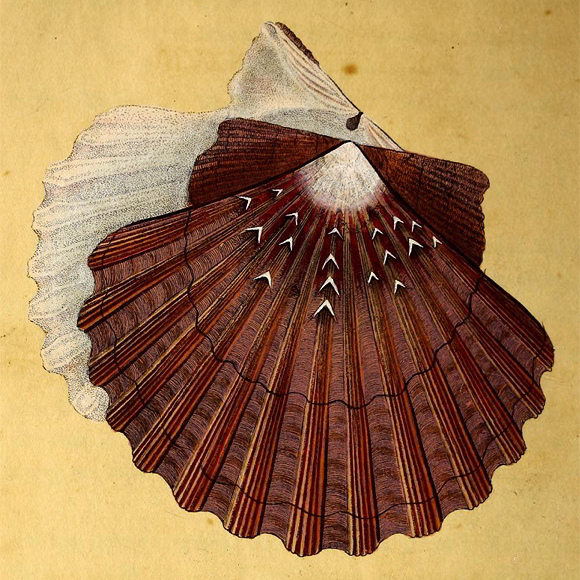 |
The species in E. Donovan: The natural history of British shells, vol. IV, London 1802, plate CXXX.
Nota bene that the species is not supposed to live in the area. |
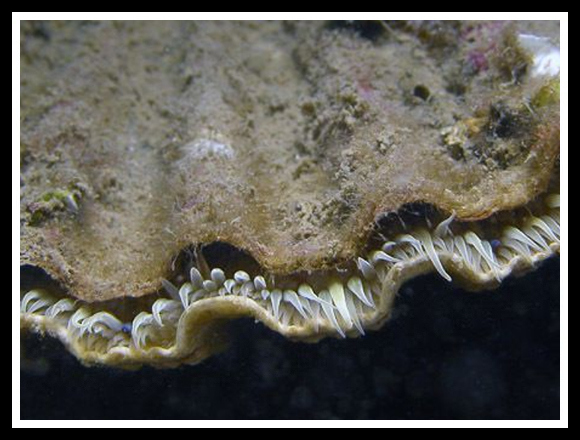 |
Donovan: « The under valve is usually white, or faintly tinged with brown, and has the rays remarkably prominent and angular; a character by which it may be easily distinguished from the Common Scallop, Ostrea maxima, which greatly resembles it, but in which the rays are rounded. »
Tegnue di Chioggia, Venezia, NW. Adriatic. Original picture provided by F. Boscolo for gbif.org – (CC BY-NC). |
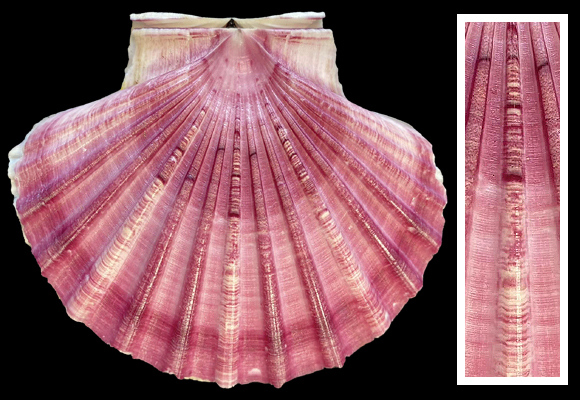 |
| 20-25m deep, Chioggia. 100mm. Original picture provided by by I. Mulero (ES) – (CC BY-NC-SA). |
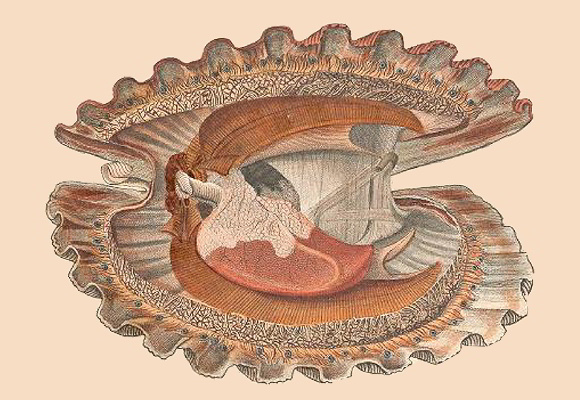 |
| The animal in G. S. Poli: Testacea utriusque siciliae…, vol. IV, Parma 1791-1796, plate XXVII via BHL. |
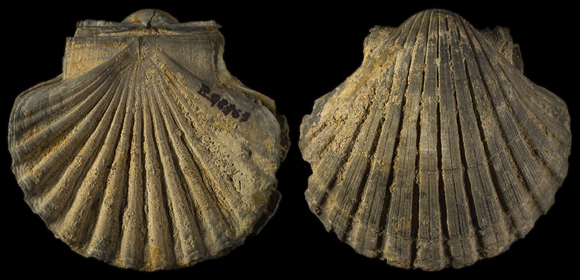 |
The species exists since the early Pliocene (circa 5Ma).
7A specimen from Oued el Oudiane, Nabeul Governorate, NE. Tunisia. 78mm. Original pictures provided by J. Falconnet for gbif.org – (CC BY). |













